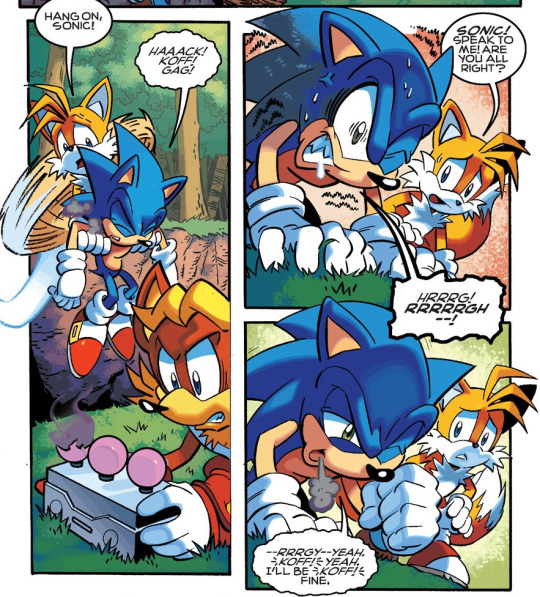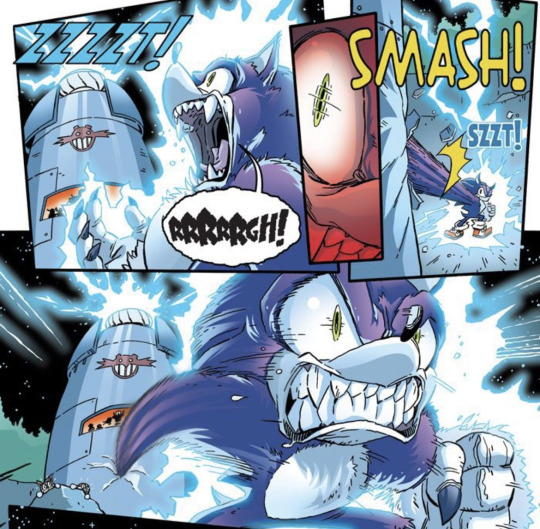#the ideas are flowing like a really full reservoir whose dam just failed
Explore tagged Tumblr posts
Text
I threw this in the tags before but it deserves its own post.
So we only ever see Sonic hog out at night in any official capacity, and when he does, his speed gets turned into strength. It’s an inverse of his strengths and weaknesses, like how nighttime can be seen as an inversion of the day.
What if that inversion applied for everybody?
Imagine!
Werefox Tails losing his flight and air mobility, but gaining a body more specialized towards burrowing underground tunnels!
Weremeleon Espio losing his quick reflexes and sharp senses, but gaining a much more durable and armored body like a Samurai’s armor that can weather any storm!
Weremadillo Mighty losing his incredible strength and strong defensive shell, but gaining incredible speed and agility like an ambush predator!
The possibilities are endless!
Y’all remember how in the rebooted Archie Sonic continuity, Sonic’s Werehog transformation was caused by him inhaling some nasty Dark Gaia essence, resulting in a slow, gradual first transformation that took place over several days?

I humbly propose a Sonic Unleashed AU, where the events of Sonic Unleashed play out pretty much the same as they usually do, but with one key exception: the fissures that resulted from the world splitting apart emits the same misty vapor, resulting in other mobians having to deal with the whole Werehog thing after some nonce inevitability ends up inhaling the stuff.
I feel like, since Chip gives Sonic the whole spiel about how it was his own will that kept him pure, the personality of werehoggified mobians should probably fall more in like with how it affects people being influenced by Dark Gaia, but with more feral and frenzied undertones, similar to the crazed frenzy Archie Sonic found himself in during his first proper transformation.

I’d love to see how something along those lines would affect not only the story, but also the character’s relationship with one another. We didn’t see many mobians in Unleashed, which makes me wonder more about how, for example, Team Chaotix would deal with a newly werehogified member (or members).
We have a lot of story potential here today fellas!!!!!!
#sonic unleashed au#this is 100% going to become a fanfiction#when i have the time to write it#which is not now :(#team chaotix#sonic unleashed#archie sonic#Sonic#sonic the hedgehog#miles tails prower#tails#tails the fox#espio the chameleon#Espio#mighty the armadillo#Mighty#Sonic the Werehog#werehog#the ideas are flowing like a really full reservoir whose dam just failed#so… a lot all at once#and i cant shut up about it aaaa
129 notes
·
View notes